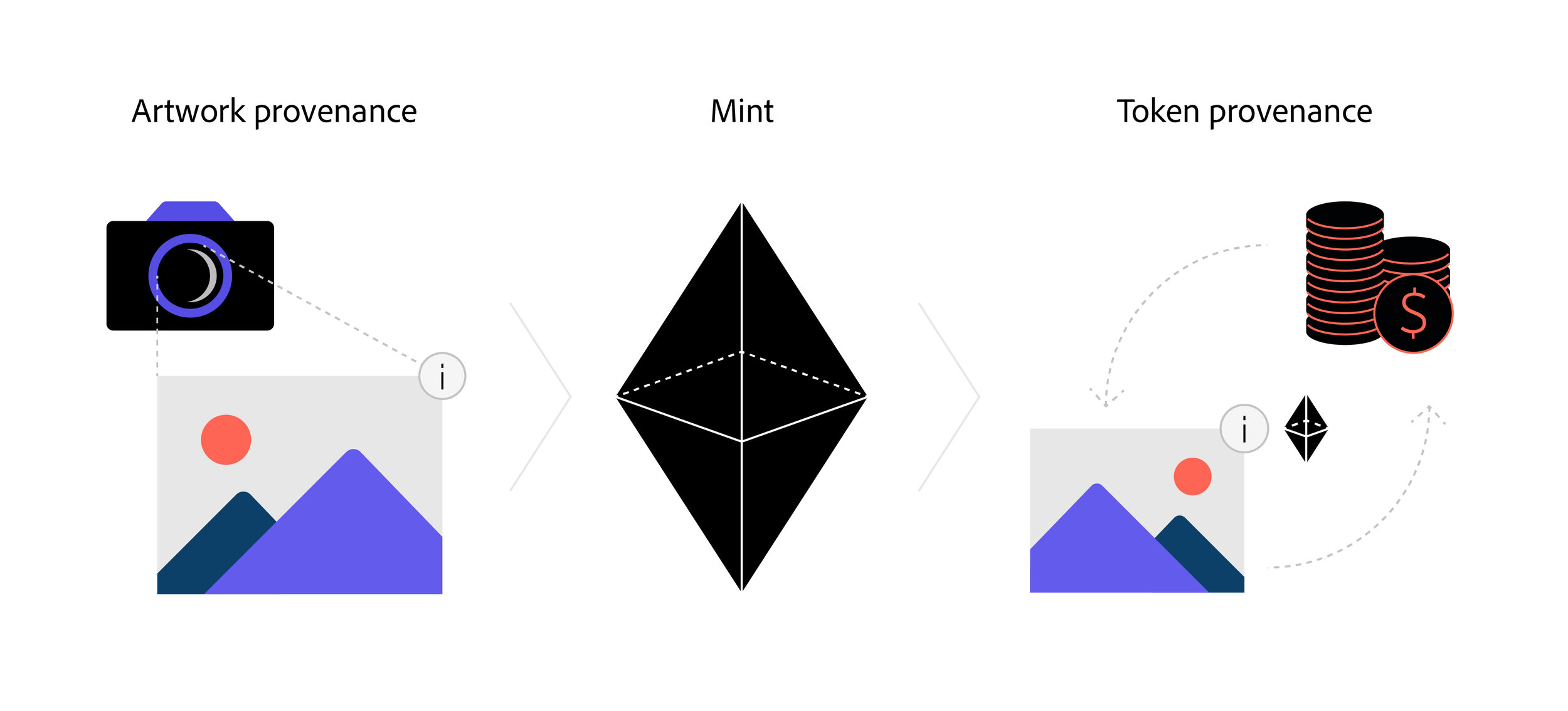NFTs & Provenance: How CAI protects creators and collectors alike
By Will Allen and Andy Parsons
Illustrations by Pia Blumenthal
Imagine strolling through downtown Manhattan in New York City and happening upon an art gallery. You walk inside and immediately see a piece that catches your eye. Could this really, truly be a Rothko? Unsure, you ask the gallery manager. They respond with confidence: “We have an exact record of everyone who has ever bought or sold this artwork.”
At first, you can’t believe your luck. A Rothko! But then your college philosophy classes kick in: did that response really answer your question? Is knowing everyone who has ever bought and sold a painting the same as knowing who painted the painting?
No, it isn’t. Welcome to the world of NFTs.
If you are unfamiliar with cryptoart and non-fungible tokens, take a few minutes and read these excellent overviews here, here, and here.
NFTs provide a public, verifiable audit trail of everyone who has bought, sold, or transferred the token. Any changes in ownership of the token are immutably recorded. Despite some of the real issues in the current landscape (such as the environmental footprint), that is a remarkable innovation.
Yet NFTs, as they are structured today, provide this provenance trail only as far back as the moment the token was minted. Knowing everyone who has bought and sold a piece of art doesn’t necessarily tell you who actually created it or if it is genuine. Albert Wenger correctly notes that in the NFT ecosystem, one of the most important problems to be solved is “around people asserting authorship to works they didn’t create.” If the value of NFTs continues to grow, the number of fraudulent sales of inauthentic art pieces could grow as well.

Though semantic purists will bristle at this suggestion, you can think of it as token provenance as distinct from artwork provenance. The artwork an NFT references requires its own parallel, connected history of creation.
This matters for two big reasons. First, for the creator, what is preventing a scammer from listing their work and reselling it to unsuspecting collectors? And secondly, for the collector, how do they know the artwork they are purchasing was actually created by the artist?
Solving the provenance problem
We propose a solution: combining the attribution standards we’ve built through the Content Authenticity Initiative with the token provenance inherent in NFTs. In the open standard the CAI has been building, a creative work has cryptographically verifiable, tamper-evident metadata attached to it with claims about who created that asset and how it was created or edited.
Today, an NFT contract links to the underlying digital art, but the file of the digital art doesn't tell you anything verifiable about its provenance. By utilizing CAI attribution standards, we can now do both. The NFT continues to show token provenance, but now the digital art itself has tamper-evident, cryptographically verified artwork provenance.

How CAI code can protect creators in an NFT world
This technique could emerge in two phases. Initially, embedding provenance data in the asset being minted will ensure that the buyer of the NFT will have access to the verifiable history and creator details of the asset. Current marketplaces could filter by embedded artwork provenance, possibly resulting in a premium on that work.
In today’s NFT world, we could take one of these beautiful photographs by Sara Lewkowicz and list them for sale on any number of open NFT marketplaces. There would be nothing in the NFT or the photo itself that would show that Sara, not us, was the real photographer.
But we recently partnered with Sara to add tamper-evident metadata to some of her work. If Sara ever chose to list this work for sale — via an NFT, a stock photography service, or a direct negotiation — the purchaser could be assured she created it by verifying this metadata.
Later, with deeper integration into the minting process itself, the connection between a given NFT and its provenance-enhanced artwork could be strengthened by enabling a two-way linkage. The artwork provenance attached to the asset could be updated each time the work changes hands and the embedded data can contain key information such as the cryptocurrency wallet address, the transaction amount, and the time of the transfer.
We’ve long been guided by the true north that giving artists credit for their work results in more opportunities for them. Here we have a real solution for the NFT ecosystem: identifying the artist behind the art.
Are you working in this area? We'd love to hear from you. Email us.